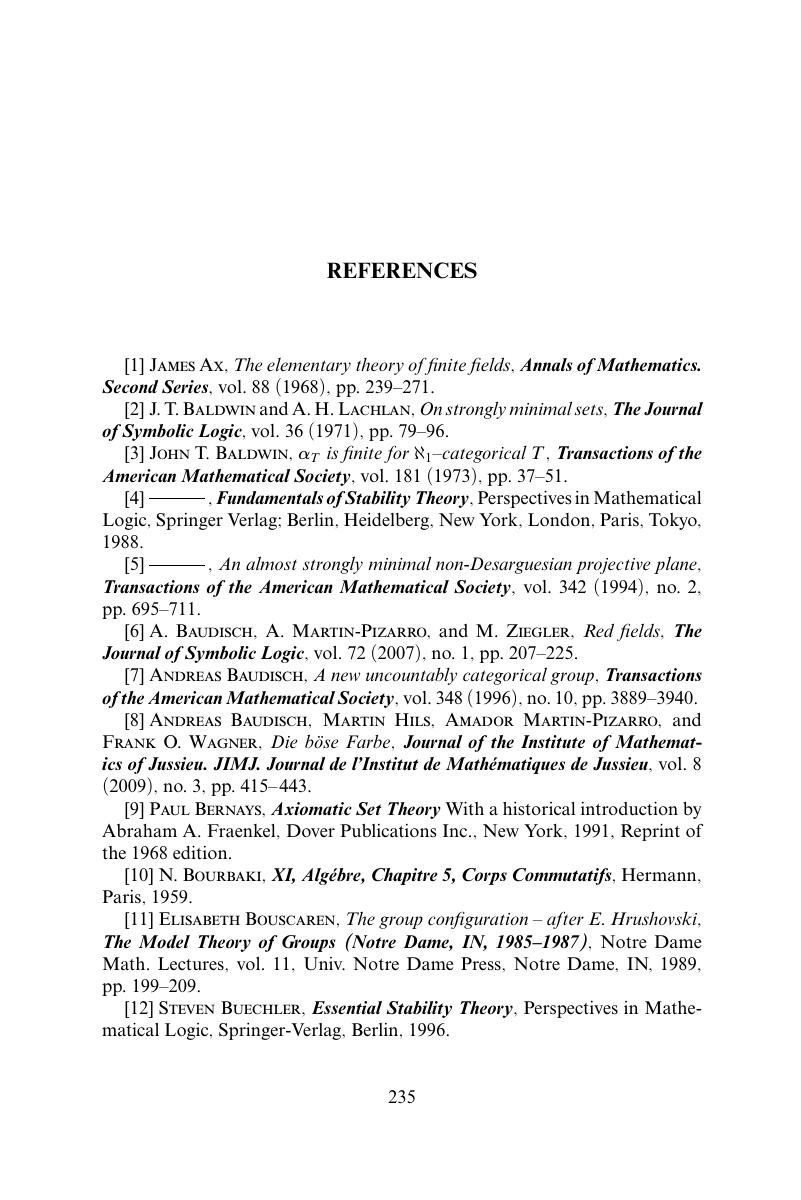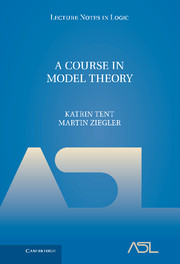Book contents
- Frontmatter
- Contents
- PREFACE
- CHAPTER 1 THE BASICS
- CHAPTER 2 ELEMENTARY EXTENSIONS AND COMPACTNESS
- CHAPTER 3 QUANTIFIER ELIMINATION
- CHAPTER 4 COUNTABLE MODELS
- CHAPTER 5 ℵ1-CATEGORICAL THEORIES
- CHAPTER 6 MORLEY RANK
- CHAPTER 7 SIMPLE THEORIES
- CHAPTER 8 STABLE THEORIES
- CHAPTER 9 PRIME EXTENSIONS
- CHAPTER 10 THE FINE STRUCTURE OF ℵ1-CATEGORICAL THEORIES
- APPENDIX A SET THEORY
- APPENDIX B FIELDS
- APPENDIX C COMBINATORICS
- APPENDIX D SOLUTIONS TO EXERCISES
- REFERENCES
- INDEX
- References
REFERENCES
Published online by Cambridge University Press: 05 June 2012
- Frontmatter
- Contents
- PREFACE
- CHAPTER 1 THE BASICS
- CHAPTER 2 ELEMENTARY EXTENSIONS AND COMPACTNESS
- CHAPTER 3 QUANTIFIER ELIMINATION
- CHAPTER 4 COUNTABLE MODELS
- CHAPTER 5 ℵ1-CATEGORICAL THEORIES
- CHAPTER 6 MORLEY RANK
- CHAPTER 7 SIMPLE THEORIES
- CHAPTER 8 STABLE THEORIES
- CHAPTER 9 PRIME EXTENSIONS
- CHAPTER 10 THE FINE STRUCTURE OF ℵ1-CATEGORICAL THEORIES
- APPENDIX A SET THEORY
- APPENDIX B FIELDS
- APPENDIX C COMBINATORICS
- APPENDIX D SOLUTIONS TO EXERCISES
- REFERENCES
- INDEX
- References
Summary

- Type
- Chapter
- Information
- A Course in Model Theory , pp. 235 - 238Publisher: Cambridge University PressPrint publication year: 2012

